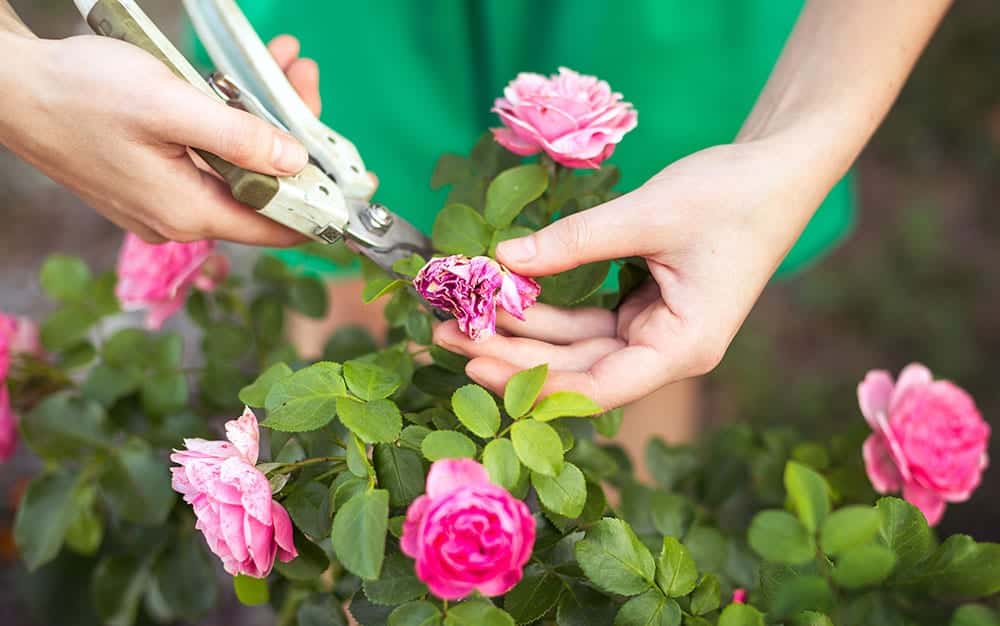There are many benefits to deadheading flowering plants during the summer season. Vibrant, vigorous growing plants with bold blooms are just around the corner when you follow these simple steps.
Big benefits
You can get the most out of your plants by paying some attention to them when their growth is at its most efficient. The main reasons to deadhead during the sunniest season is to redirect the plant’s energy from producing seed in the old flowers back to the roots for further vegetation to be produced.
Deadheading also invigorates the stem and leaves of the plant by building cell walls.

Regular deadheading improves the air circulation of the plant to keep the air flow preventing things like fungal diseases.
Finally, it’s no secret that removing the growth that’s had its heyday will keep the plant looking neat and tidy.
So, whether a light deadheading is for show or for boosting growth, removal of spent growth is a great tool to keep your garden plants ticking along nicely.
Prime plants

A whole host of garden plants benefit from a summer deadheading session, though annuals are not the subject of your focus here. Your deadheading sights should be set on perennials and plants that respond to being cut back by flowering again.
Even some perennials, peonies for example, do not need any deadheading since they will only bloom once a season.
When giving your dahlias a summer trim, you can tell the bud is ready to be snipped back when the shape of the bud goes from being rounded to being pointy at the tip. This is the key to keep the crisp colours of dahlias appearing right across the summer months.
Buddleja is a prime example of a plant that does very well when you remove the spent flowers. Any flowers no longer in their prime can be simply clipped away. These distract from the look of the bright purple blooms and new bright buds can take their place for the butterflies to enjoy.
Refreshing the plant’s flowers like this keeps the pollinators coming back for more, which ultimately benefits the plant.
Top techniques
To deadhead, you can either pinch off spent flowers by using your finger and thumb just below the flower’s head, which works best for smaller flowers.
Alternatively, you can use a pair of secateurs and get snipping. Secateurs are essential when cutting back woody twigs, like when deadheading roses or pruning shrubs. Delphinium and begonias, as well as other plants with multiple blooms on one stem, can be deadheaded once two-thirds of the blooms have faded.

For flower beds with large amounts of plants, like with cosmos, the best way to deadhead them is to cut back the entire group of plants at once. Again, you will want to wait until most of the blossoms on the plant has begun to die back.
With large areas of deadheading, where precision isn’t as important, you can use larger tools to make light work of it, such as a pair of grass clippers or handheld hedge trimmer.
Deadheading your garden can be a delightful task to take on during the summer. You can spend as much, or as little, time out in the garden just pottering about and tending to your plants in this way.
It’s vital work that helps to keep your garden plants vibrant but it’s not backbreaking and can actually be quite a relaxing pastime at the beginning or end of your day.
So, to keep your plants in tip-top summer shape, dial-up on the deadheading and you will have a summer filled with bright beautiful blooms.

Leave A Comment